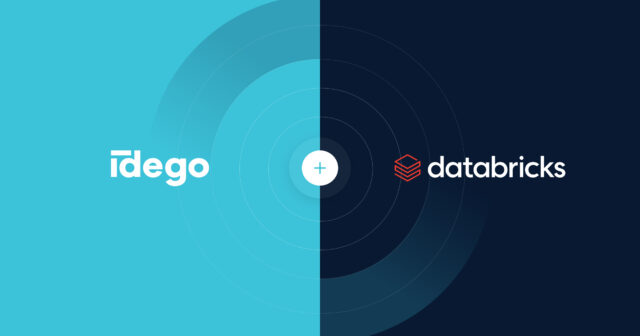
Choosing a technology or programming language is not an easy task, both from the point of view of novice programmers trying to choose the optimal professional path, as well as business representatives planning to base a given undertaking on a particular technology (e.g. a website or application). In both cases, asking experts for help is the best choice.
A beginner programmer will certainly receive a lot of help from a mentor. Businesses can benefit from the knowledge and experience of their team or use external experts. It all depends on the level of competence of the organisation’s employees and how advanced the planned undertaking is. Only a thorough analysis will allow you to choose the optimal technology – Python or Java. Knowing the basic differences between these technologies – their advantages and disadvantages, as well as other well-known projects that have been based on them – can also help.
Differences between Java and Python
It may seem wise to opt for newer technology, because in the IT world, change is constant. One could even risk saying that each subsequent year is separated from the previous year by a technological leap. In this case, the principle does not apply. Both Python and Java were created several decades ago.
The origins of Java date back to 1991, but its first public implementation took place in 1996. Since then, it has repeatedly undergone more or less significant changes and optimizations, which have quickly made it one of the most widely used programming languages in the world.
Python, whose name does not come from a snake at all, but is rather a homage to the comedians of Monty Python, was created more or less at the same time. Its first version saw the light of day in 1991 and in subsequent years there were further iterations. Because of its simplicity and versatility, similarly to Java, Python is now one of the most popular programming languages.
We already know that both Python and Java have a long history and great popularity, but let us now focus on the elements that distinguish the two. When talking about differences, especially those that are important from a business point of view, the following needs to be mentioned:
Syntax
Comparing the syntax of Java and Python, one can quickly notice that Python is much simpler and more transparent. In Java, each specific block of code must be defined using curly brackets. What is more, each variable requires a prior definition of its type, which unfortunately translates into the length of the final code. Code performing exactly the same steps in Python will be several times shorter.
Productivity
While the length of the code does not directly affect the speed of the procedure, it can significantly affect the time required for the programmer to create the code. With truly complex projects, the difference will be significant and thus directly affect the team’s performance.
Compilation
At one time, Java was advertised with the extremely powerful slogan ‘write once, run anywhere’, which means that once written, the code can run literally anywhere. How is this possible? Java is architecture-independent – it compiles to an intermediate code, executed by a virtual machine (Java Virtual Machine), operating independently of the operating system. In the case of Python, it is not so obvious – it works especially well on Linux.
Speed
For many projects, speed is an extremely important selection criterion. In this duel, Java is the clear winner. Why? Python acts as an interpreter and determines the type of data while it is being processed, which translates into a correspondingly longer operating time.
Usability
Python is based on the concept of dynamic programming and is based on simple syntax, making it much easier to use. It does not require any curly brackets or semicolons and the code blocks are distinguished by notches, which makes the code clearer and easier to read.
Pros and cons of both languages
When writing about the pros and cons of both languages, cost issues must be addressed, as they are one of the key factors for many organisations. Python is the clear leader in this dimension. Why? The basics of Python can be mastered in just a few days. It will also take only a few days to prepare the project and start working on the code. In the case of Java, this usually takes several weeks.
It is not for no reason that Java is treated by many as a corporate language. Large players have everything they need to develop a Java-based project – time and a sufficiently large budget. The slightly higher level of stability in Java is also a convincing factor for a large investment. Python is undoubtedly more cost-effective, which is why it is the language of choice for small and medium-sized projects, as well as those in which the deadline plays a key role.
Where and how can Python and Java be used?
The use of Java and Python is extremely broad today, although it is possible to identify areas where each of these languages prevails. Python, due to its extremely rich set of mathematical and statistical tools, such as NumPy, SciPy or even Pandas libraries, is perfect for projects in the field of Data Science, Deep Learning or Machine Learning. It is also widely used in the development of corporate applications and websites. Python is the basis of Instagram or Netflix, for example. We’ve used Python, among others, to build a payment management system and a social lending platform.
In the case of Java, its unchangeability and backward compatibility are valued above all. What does this mean? Unlike Python, for example, Java has been bypassed by significant technological changes that would force users of applications based on this technology to make costly and time-consuming modifications to environments. For this reason, too, Java is widely used in corporate environments. It is also perfect for creating Android applications, Big Data projects and websites. What known projects are based on Java? Such platforms as Slack, UBER or Airbnb, for example.
Why should you think about using Python or Java in your project?
Java and Python are currently believed to be the most popular programming languages. They are widely used by companies all over the world and have been utilised to create some of the most popular applications and websites. Are there any additional arguments in favour of Java or Python? Their relatively simple syntax, rich documentation which facilitates each project, as well as a large and helpful community that is willing to share knowledge and helps to solve even the most complex problems, should be mentioned here as well.
From the business point of view, this is a vital decision – choosing the right technology to implement the project. If the organisation has the necessary human resources and an appropriate level of expertise within the team, the task is much easier. The situation is somewhat different in the context of companies that do not have highly qualified teams of programmers at their disposal. In their case, finding the right partner for cooperation will largely determine the success of the whole project. It is, therefore, worthwhile to do some research before making such a decision – analyse the available opportunities, take into account the experience of each software house and familiarise oneself with examples of projects they’ve carried out so far.








 Andrzej Kopera • Sep 05
Andrzej Kopera • Sep 05

